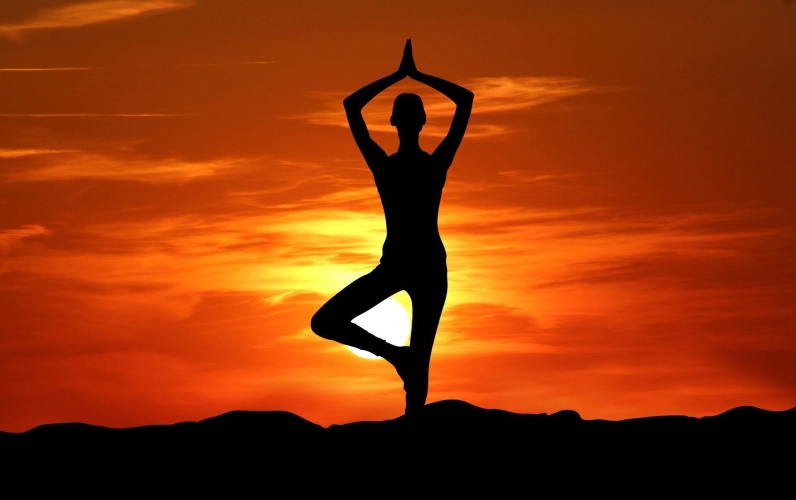
Derived from the Sanskrit word Yuj which means to unite or to join, yoga symbolizes the union of body and mind, thought and action through a holistic approach that provides many physical and mental health benefits. Yoga is a physical, mental, and spiritual exercise, which originated in India about 5000 years ago. When it was first developed, it was a spiritual as well as a physical form of workout. In the late 19th and early 20th centuries, yoga was introduced to the Western world when Swami Vivekananda travelled to the US in 1893 to deliver a talk about yoga at a conference in Chicago. Between 1920 and 1960 yoga became a very popular form of exercise in the US and Europe.
Our PM emphasizes that yoga is not just about exercise, but a way to discover the sense of oneness with yourself, the world, and nature. People from all walks of life can practise yoga which is emerging as the most friendly and reliable way to keep fit. There are more than 13 variants of traditional yoga, and each of these represents a different focus and set of characteristics. Hatha yoga (“ha” means sun and “ta” means moon) is a preparatory process to bring a balance between the Pingala and Ida. It is a way to understand the mechanics of the body to create a certain atmosphere, and then use the body postures to drive energy in specific directions. Kundalini yoga, which stands for life force energy (prana or chi), are yoga sequences designed to unlock this energy and to reduce stress and negative thinking. Vinyasa yoga consists of poses that are synchronized with the breath in a continuous rhythmic flow. Ashtanga yoga is a very physical, flow-style yoga with spiritual components wherein each person memorizes the practice and moves at her own pace through the poses.
Yin yoga is a slower style of yoga in which poses are held for five minutes or longer. Iyengar Yoga is the trademark of BKS Iyengar involves the use of props, such as blocks, belts, bolsters, chairs, and blankets. Bikram Choudhury developed Bikram yoga or hot yoga is meant to flush toxins, manage weight and allow students to move more deeply into poses and breathing exercises, for ninety minutes in a room heated to 40.6°C with a humidity of 40%. Power yoga is generally more active which is done at a quicker pace than other styles of yoga
Sivananda yoga is a form of hatha yoga based on the doctrine of Swami Sivananda, which starts with a pose then moves into breathing exercises, sun salutations, followed by twelve basic asanas. Restorative yoga is a form of yoga that uses props to completely relax the body through poses, which are held for at least five minutes. Prenatal Yoga provides stress relief and breathing exercises during labour and delivery. A relatively new practice that involves traditional yoga poses with the added support of a strong, silky hammock that hangs from the ceiling to perform inverted poses is aerial yoga or anti-gravity yoga.
Many people use yoga as a complementary therapy alongside conventional medical treatments for different ailments. Yoga improves symptoms of generalized anxiety disorder, a condition with chronic nervousness and worry. For the study, 226 men and women with generalized anxiety disorder were randomly assigned to three groups: cognitive behavioural therapy (CBT), Kundalini yoga, or stress-management education. After 3 months, both CBT and yoga were found to be significantly more effective for anxiety than stress management. Specifically, 54% of those who practised yoga showed meaningfully improved conditions compared to 33% in the stress-education group.
Regularly practising yoga exercises may reduce the level of inflammation that normally rises because of both normal ageing and stress. Psychosomatic Medicine journal reports that women who routinely practised yoga had lower amounts of cytokine interleukin-6 (IL-6) in their blood. The women also showed smaller increases in IL-6 after stressful experiences than did women who were the same age and weight but who were not yoga practitioners. IL-6 is an important part of the body's inflammatory response that is implicated in heart disease, stroke, type-2 diabetes, arthritis, and many other age-related diseases.
Our fast lifestyle has reduced options for regular physical exercise and social activities. So we must think differently and creatively about ways to keep our mind and body healthy. So practice yoga under the guidance of a guru.
(The author is a researcher and a freelance writer)